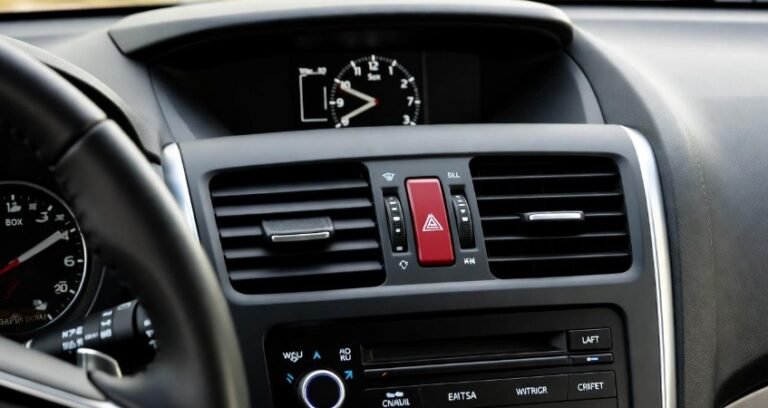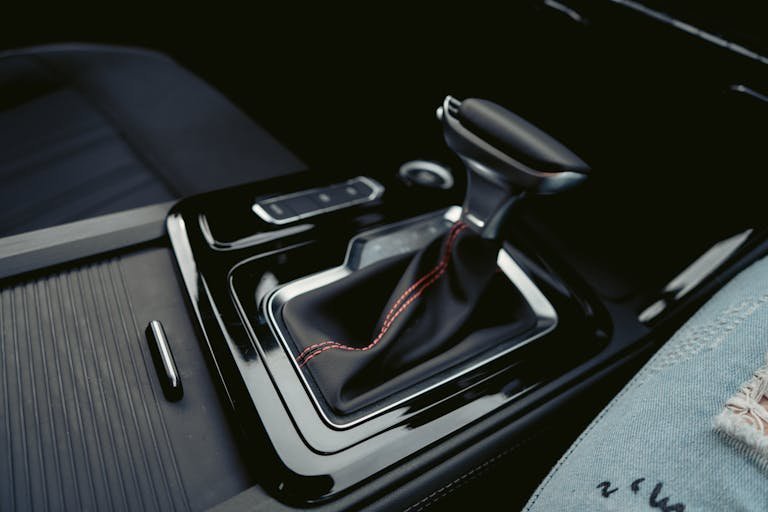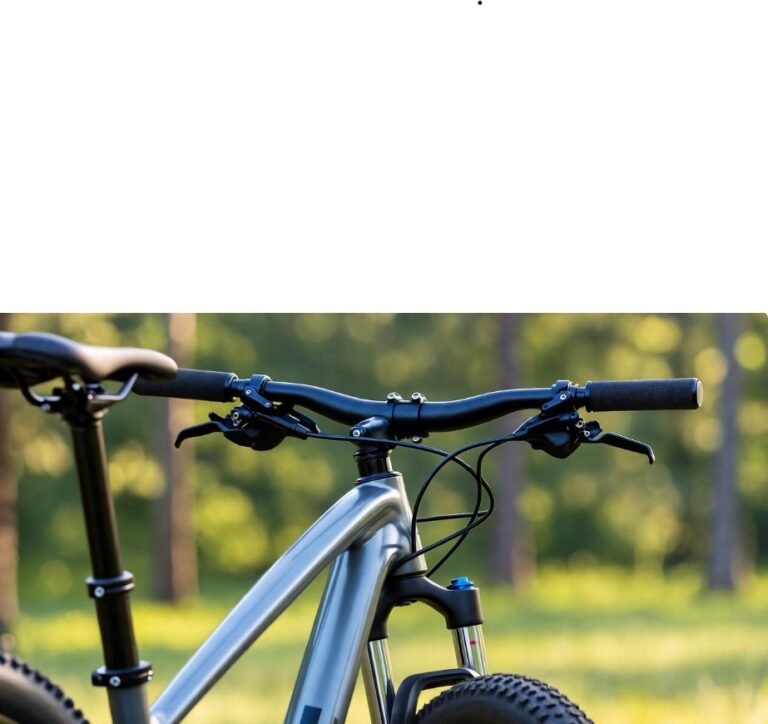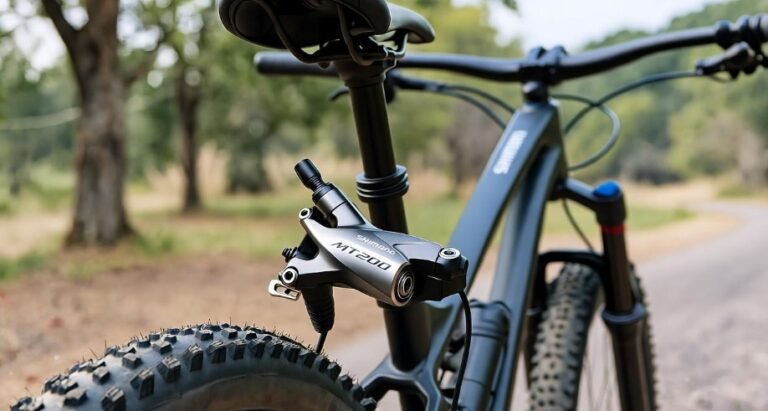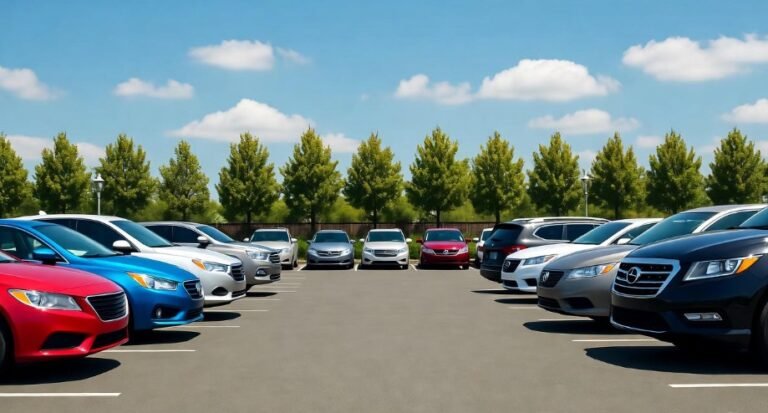Difference Between Disc and Drum Brakes
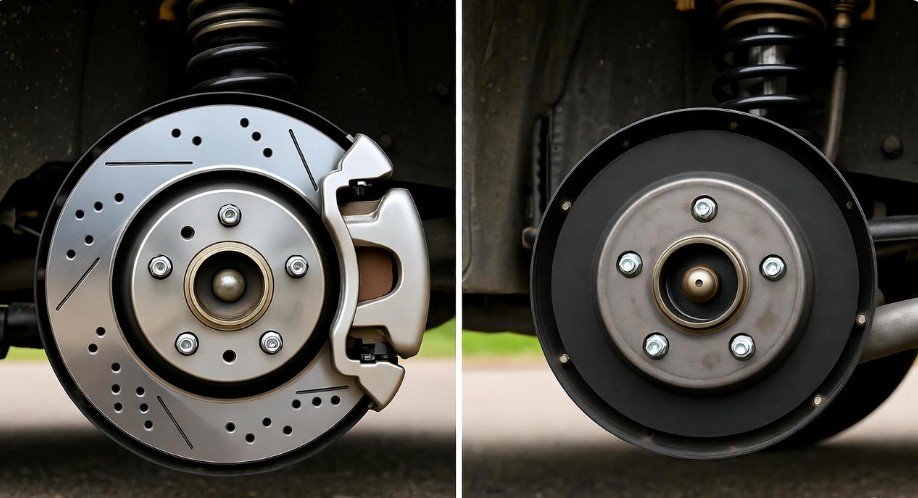
The difference between disc and drum brakes lies in their design and how they apply stopping power. Disc brakes use a rotor and caliper, offering superior performance and heat dissipation, while drum brakes use a drum and shoes, a simpler and often more cost-effective design found in many older or rear braking systems.
Key Takeaways
- Disc brakes provide better stopping power.
- Drum brakes are generally less expensive to produce.
- Disc brakes dissipate heat more effectively.
- Drum brakes can be more susceptible to water.
- Modern cars often use disc brakes on all wheels.
- Understanding brake types ensures safer driving.
Understanding Your Car’s Stopping Power: The Difference Between Disc and Drum Brakes
When you press your brake pedal, you expect your car to stop smoothly and quickly. But have you ever wondered about the technology working behind that crucial function? The braking system is one of the most vital safety features in any vehicle. At Aautomotives, we’re here to demystify its components. A common point of confusion for many car owners is understanding the primary types of brakes: disc and drum brakes. While both aim to slow down your vehicle, they achieve this through different mechanisms and offer distinct advantages.
Many drivers see these terms but aren’t quite sure what sets them apart. This guide will break down the difference between disc and drum brakes in a clear, easy-to-understand way. We’ll explore how each system works, their pros and cons, and why you might find one type on your front wheels and another on your rear. Knowing this can help you appreciate your car’s engineering and make informed decisions about its care. Let’s dive into the mechanics that keep you safe on the road.
How Do Disc Brakes Work?
Disc brakes represent a more modern and performance-oriented braking system. They are commonly found on the front wheels of most vehicles and increasingly on all four. The core components of a disc brake system are the rotor and the caliper.
The Disc Brake Rotor: Spinning to Stop
The rotor is a flat, disc-shaped metal component that is attached to the wheel hub and spins with the wheel. Think of it as a large, metal plate. Most rotors are made from cast iron, but high-performance vehicles might use carbon-ceramic materials for even better durability and heat management.
The Brake Caliper: The Gripping Force
The caliper is mounted to the suspension and straddles the rotor. Inside the caliper are one or more “pistons.” When you hit the brake pedal, hydraulic pressure is sent from the master cylinder to these pistons. The pistons then push the brake pads against the surface of the spinning rotor.
The Brake Pads: Friction Masters
Brake pads are the friction material that makes contact with the rotor. They are designed to create a high coefficient of friction. As the pads clamp down on the rotor, the kinetic energy of the spinning wheel is converted into heat, slowing the vehicle down. The pad material is crucial; it must be durable enough to withstand high temperatures and frequent use without wearing out too quickly.
Advantages of Disc Brakes
Disc brakes offer several significant advantages that make them the preferred choice for many applications:
- Superior Stopping Power: They generally provide more assertive and consistent braking force compared to drum brakes.
- Excellent Heat Dissipation: The exposed nature of the rotor allows air to circulate around it, effectively dissipating the heat generated during braking. This reduces the risk of “brake fade,” where brakes become less effective at high temperatures.
- Better Performance in Wet Conditions: The open design helps to shed water more effectively, meaning they tend to perform better in rain than drum brakes.
- Easier Maintenance and Inspection: Many disc brake components are more accessible, making inspections and replacements simpler. You can often see the brake pads through the wheel spokes.
Disadvantages of Disc Brakes
While highly effective, disc brakes do have a couple of drawbacks:
- Higher Cost: They are typically more expensive to manufacture and replace than drum brakes.
- More Susceptible to External Contaminants: Because they are exposed, rotors and pads can be more easily affected by dirt, salt, and debris, which can sometimes lead to noise or premature wear.
How Do Drum Brakes Work?
Drum brakes are an older, yet still widely used, braking technology. They are often found on the rear wheels of less expensive or older vehicles and on the parking brake system of many cars. The main components here are the brake drum and brake shoes.
The Brake Drum: The Rotating Shell
The brake drum is a bell-shaped or cylindrical component that is attached to the wheel hub and rotates with the wheel, just like a disc brake rotor. However, instead of being an open disc, it’s a closed cylinder.
The Brake Shoes: Expanding to Grip
Inside the brake drum are the brake shoes. These are curved, metal components lined with friction material. When you apply the brakes, hydraulic pressure pushes the brake shoes outward, forcing them to expand and press against the inner surface of the rotating brake drum.
The Wheel Cylinder: The Hydraulic Actuator
The wheel cylinder is a small hydraulic cylinder containing two pistons. When brake fluid pressure is applied, it forces these pistons apart, pushing the brake shoes against the drum.
Advantages of Drum Brakes
Drum brakes still have a place in the automotive world due to their own set of benefits:
- Lower Cost: They are generally cheaper to manufacture and can be more cost-effective to replace.
- Effective Parking Brake Integration: The drum brake design is well-suited for integrating a parking brake mechanism.
- Better Protection from Elements: The enclosed design offers some protection from dust, dirt, and water compared to exposed disc brakes, which can sometimes lead to quieter operation in certain conditions.
- Self-Energizing Effect: In some drum brake designs, the rotation of the drum helps to “wedge” the shoes more tightly against the drum, providing a self-energizing effect that can increase braking force without additional pedal pressure.
Disadvantages of Drum Brakes
Drum brakes have limitations that have led to disc brakes becoming more dominant:
- Poor Heat Dissipation: The enclosed design traps heat, making them more prone to brake fade during heavy or prolonged braking.
- Less Effective in Wet Conditions: Water can get trapped inside the drum, significantly reducing braking effectiveness until it can evaporate or be expelled.
- More Complex Maintenance: Accessing and replacing drum brake components can be more involved than with disc brakes, often requiring the removal of the drum itself.
- Can Be Noisier: As they wear, drum brakes can sometimes produce squealing or grinding noises.
Disc vs. Drum Brakes: A Side-by-Side Comparison
To get a clearer picture of the differences, let’s look at a direct comparison of disc and drum brake systems. Understanding these distinctions can help you appreciate why manufacturers choose specific brake types for different parts of a vehicle.
| Feature | Disc Brakes | Drum Brakes |
|---|---|---|
| Primary Components | Rotor, Caliper, Brake Pads | Drum, Brake Shoes, Wheel Cylinder |
| Mechanism | Pads clamp onto a spinning rotor. | Shoes expand outward against the inside of a spinning drum. |
| Heat Dissipation | Excellent, due to open design. | Poor, due to enclosed design, prone to fade. |
| Performance in Wet Conditions | Good; sheds water effectively. | Poor; water can get trapped, reducing effectiveness. |
| Stopping Power | Generally superior and more consistent. | Can be effective but more prone to fade. |
| Cost | Higher manufacturing and replacement cost. | Lower manufacturing and replacement cost. |
| Maintenance Ease | Generally easier accessibility. | More complex disassembly required. |
| Common Location | Front wheels of most vehicles; all wheels on performance cars. | Rear wheels of many cars; parking brake systems. |
| Durability | Pads wear faster but are easier to replace. | Shoes can last longer but are more complex to service. |
| Susceptibility to Contaminants | More exposed to dirt, salt, debris. | More enclosed, some protection, but can trap moisture. |
Why Do Cars Have Different Brakes on Front and Rear?
You’ve likely noticed that many cars don’t have the same type of brakes on the front and rear wheels. This is a deliberate engineering decision based on physics and vehicle dynamics.
Weight Transfer and Front Braking Power
When a car brakes, weight shifts forward due to inertia. This means the front tires bear more of the vehicle’s weight, allowing them to generate more friction and stopping force. Consequently, around 70-80% of a car’s braking force is typically applied by the front brakes. For this reason, front brakes are almost always disc brakes, chosen for their superior stopping power and heat management capabilities.
Rear Brakes: Support and Stability
The rear brakes handle a smaller portion of the braking force. While they also slow the car, their primary role is to provide stability and prevent the rear from overtaking the front during hard braking. Disc brakes can be used on the rear for enhanced performance, but drum brakes are also common, particularly on less performance-oriented vehicles. Their lower cost and suitability for parking brake integration make them a practical choice for the rear axle.
Brake System Maintenance Tips from Aautomotives
Keeping your brakes in top condition is paramount for safety. Whether you have disc or drum brakes, regular maintenance is key.
Regular Inspections are Crucial
Make it a habit to have your brakes inspected during routine oil changes or tire rotations. Look for any signs of wear, fluid leaks, or unusual noises.
Listen to Your Car
Pay attention to any new sounds when braking, such as grinding, squealing, or clicking. These are usually indicators that something needs attention.
Check Brake Fluid Levels
Brake fluid is essential for hydraulic braking systems. Ensure the fluid level in the reservoir is within the recommended range. Contaminated or low brake fluid can severely impact braking performance. For information on U.S. brake fluid standards and recommendations, consult resources from the National Highway Traffic Safety Administration (NHTSA).
Feel the Difference
Notice how your brake pedal feels. If it feels spongy, soft, or sinks to the floor, it’s a sign of a potential problem that needs immediate attention.
Know When to Replace
Brake pads and rotors (or drums and shoes) are wear items. They need to be replaced periodically. Your mechanic can advise you on the wear limits for your specific vehicle’s brake components.
Pro Tip
Always use high-quality brake pads and rotors recommended for your vehicle’s make and model. Cheaper alternatives might compromise braking performance and durability.
Frequently Asked Questions About Disc and Drum Brakes
What is the main difference between disc and drum brakes?
The main difference lies in their design and operation. Disc brakes use pads that squeeze a rotor, while drum brakes use shoes that expand against the inside of a drum.
Are disc brakes better than drum brakes?
Generally, disc brakes offer superior stopping power, better heat dissipation, and better performance in wet conditions, making them considered “better” for most modern driving needs, especially for front brakes.
Why do cars have drum brakes on the rear?
Drum brakes are often used on the rear because they are less expensive to manufacture and maintain, and they work well with integrated parking brake systems. They handle less braking force than the front brakes.
Can you convert drum brakes to disc brakes?
Yes, it is possible to convert drum brakes to disc brakes, often through aftermarket kits. This can improve braking performance but can be costly and may require professional installation.
How do I know if my car has disc or drum brakes?
You can usually tell by looking at the wheels. Disc brakes have a visible rotor and caliper, often seen through alloy wheels. Drum brakes have a solid drum covering the braking mechanism, which is less visible.
What happens if my disc or drum brakes fail?
Brake failure is a serious safety hazard. Loss of braking often results from brake fluid leaks, worn-out pads/shoes, or mechanical issues. If your brakes fail, use your parking brake, downshift to a lower gear to slow down, and steer to a safe location while honking your horn. Seek immediate professional assistance.
How often should I service my brakes?
Brake systems should be inspected at least annually or every 12,000 miles, and more frequently if you notice any issues. Brake fluid should typically be flushed every 2-3 years. Always follow your vehicle manufacturer’s recommended maintenance schedule.
Conclusion: Driving with Confidence
Understanding the difference between disc and drum brakes empowers you as a car owner. While disc brakes lead the pack in performance and heat management, drum brakes offer a cost-effective solution for certain applications and excel in parking brake integration. Many vehicles utilize a combination, leveraging the strengths of each system to provide balanced and reliable stopping power.
At Aautomotives, we believe that knowledge is your best tool for safe and confident driving. By understanding how your brakes work, you can better appreciate their importance, recognize when they need attention, and communicate more effectively with your mechanic. Remember to prioritize brake maintenance – it’s one of the most critical aspects of keeping you and your loved ones safe on the road, whether you’re navigating the highways of Texas or the byways of New England. Drive smart, drive safe, and always keep your brakes in top shape!

